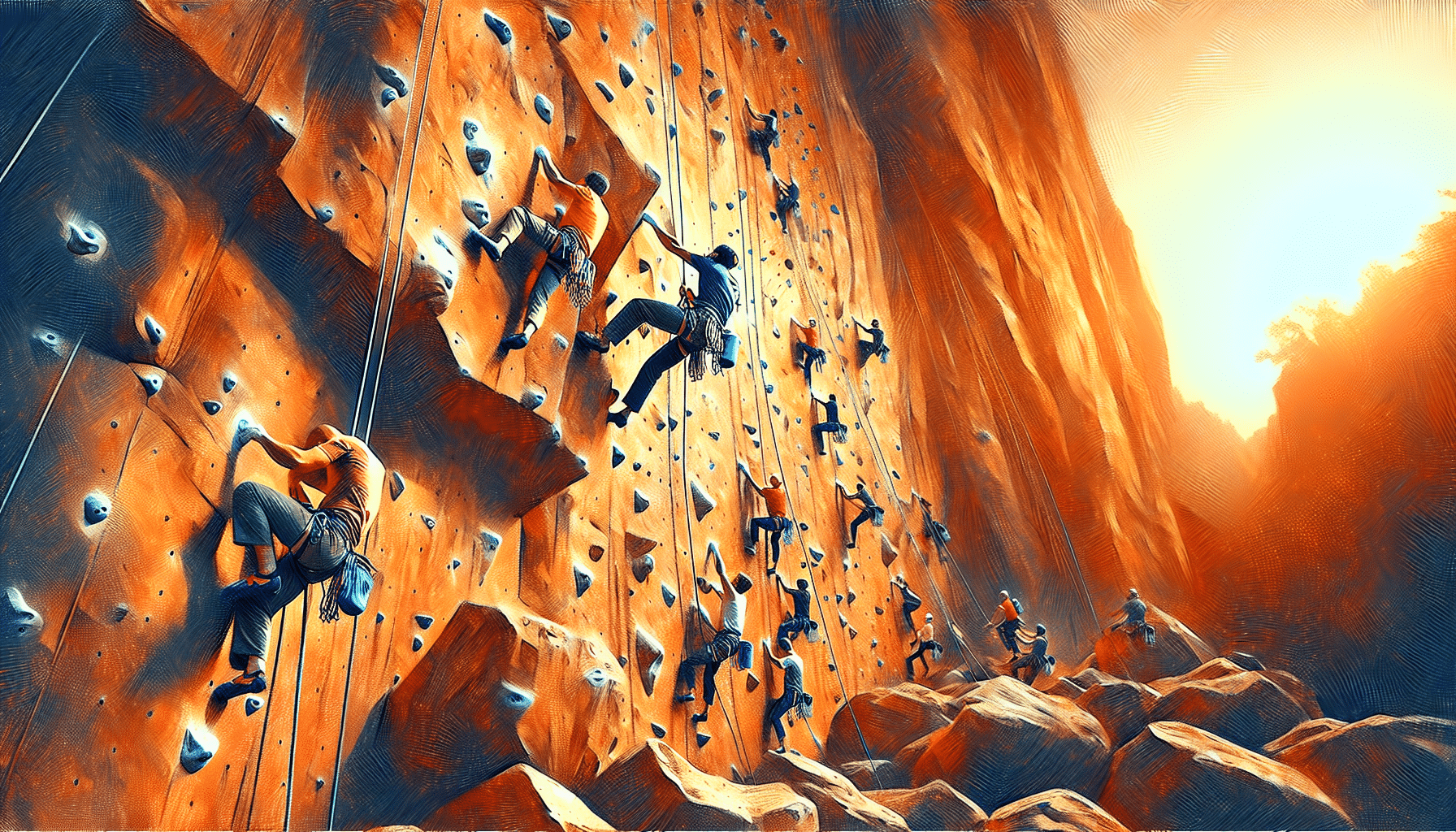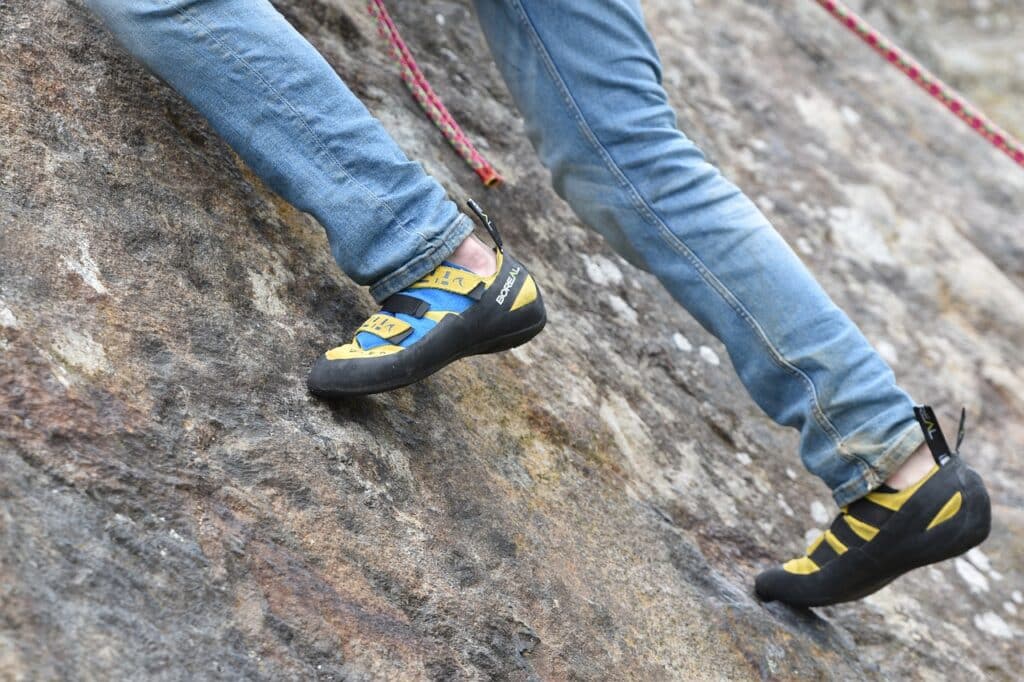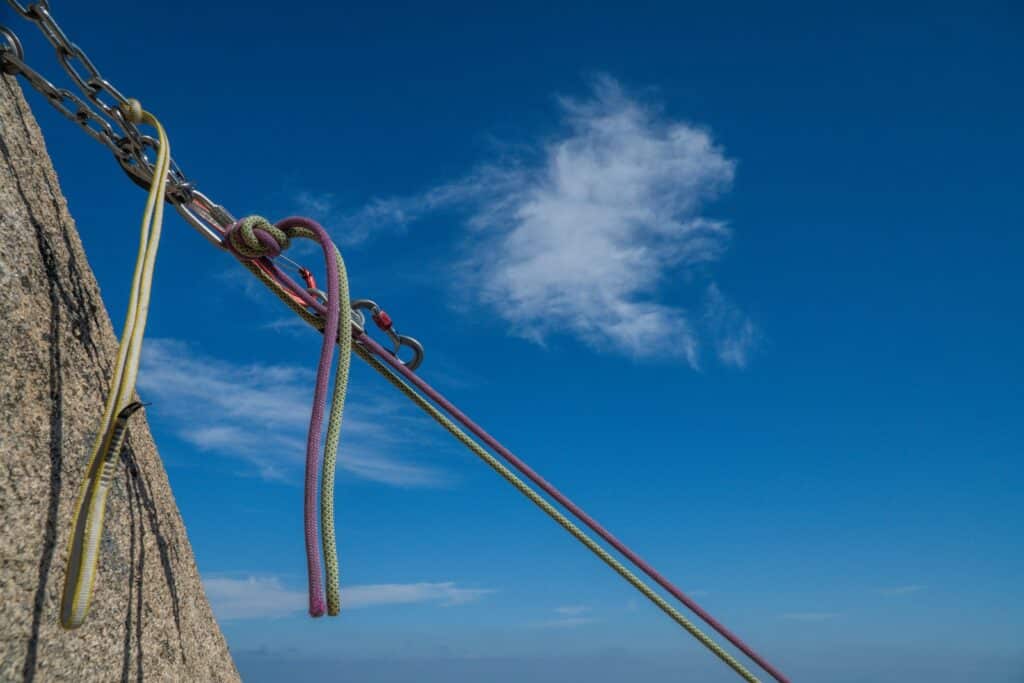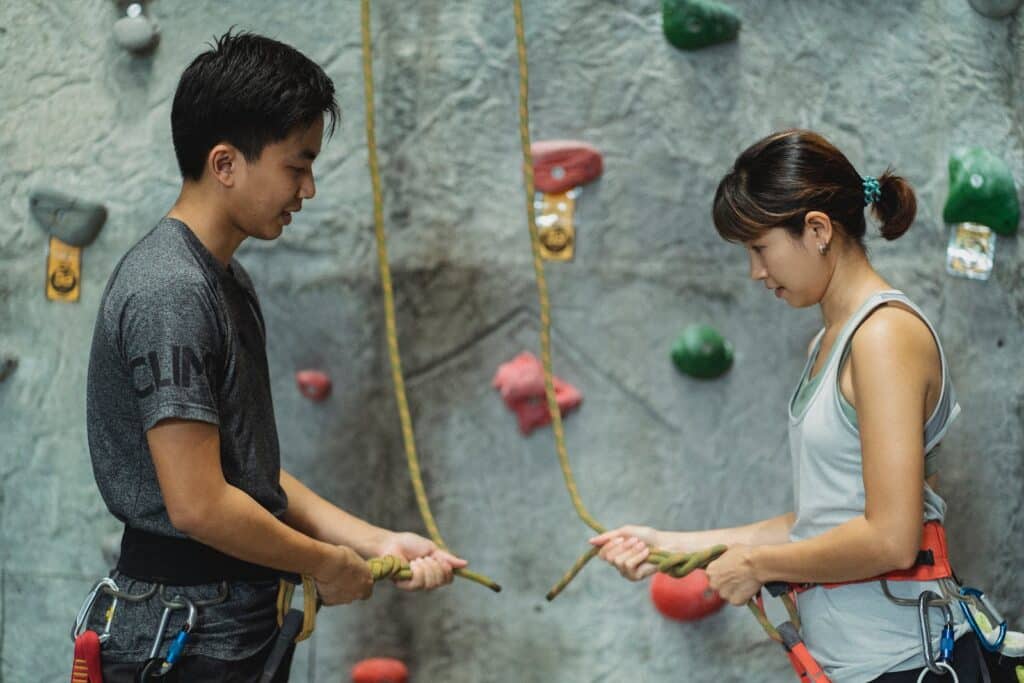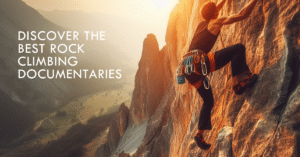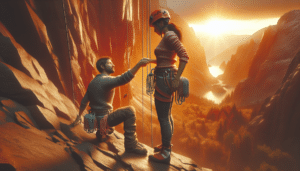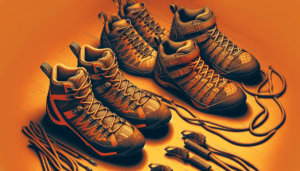Table of Contents
ToggleThe Basics of Multi-Pitch Climbing
Welcome, fellow climbers! Today, I want to dive into the exhilarating world of multi-pitch climbing. If you’re ready to level up from single-pitch routes, you’re in the right place!
Understanding Multi-Pitch Climbing
Let’s start with understanding what multi-pitch climbing actually is. In simple terms, multi-pitch climbing involves ascending a climb that’s longer than a single rope length, requiring multiple stops to belay and change lead. These stops, known as belay stations, provide a platform to rest, regroup, and plan the next section of the ascent. It’s a type of climbing that allows climbers to experience different sections of rock and provides a greater sense of adventure as you ascend higher and further away from the ground.
In my opinion, the allure of multi-pitch climbing lies not just in the physical challenge but also in the mental game. You’re not simply going up, you’re journeying through the climb, experiencing the rock in a whole new way. If you’ve ever wanted to feel like you’re part of a pro rock climber interview, multi-pitch climbing is the way to go!
Essential Skills for Multi-Pitch Climbing
Now, let’s talk about the skills you need to start your multi-pitch climbing training. First off, you need a solid foundation in single-pitch climbing, so if you’re a total newbie, check out our guide on home rock climbing workouts for beginners for a great starting point.
For multi-pitch climbing, it’s crucial to efficiently manage rope systems, belays, anchor points, and gear placements for a safe and successful ascent. Proper rope management is key, and learning techniques like flaking the rope, using a rope bag, and using intermediate anchors can help manage this effectively.
Next, you’ll need physical conditioning, including endurance, strength, and flexibility to handle the demands of long, sustained climbs. Trust me, your body will thank you for that extra hour you spent at the gym or on the yoga mat!
Finally, mental skills such as route finding, decision making, and managing fear and stress are essential for multi-pitch climbing (FlashPumped). Remember, climbing is as much a mental game as a physical one. Clear and concise communication between climbers is also of paramount importance to ensure that both climbers are aware of each other’s actions and can anticipate any changes in the climbing plan.
In the end, multi-pitch climbing is a thrilling adventure that challenges both your body and mind. So gear up, train hard, and get ready to reach new heights! Keep an eye out for the rest of this guide where we’ll delve deeper into the specifics of multi-pitch climbing training. Happy climbing!
Training for Multi-Pitch Climbing
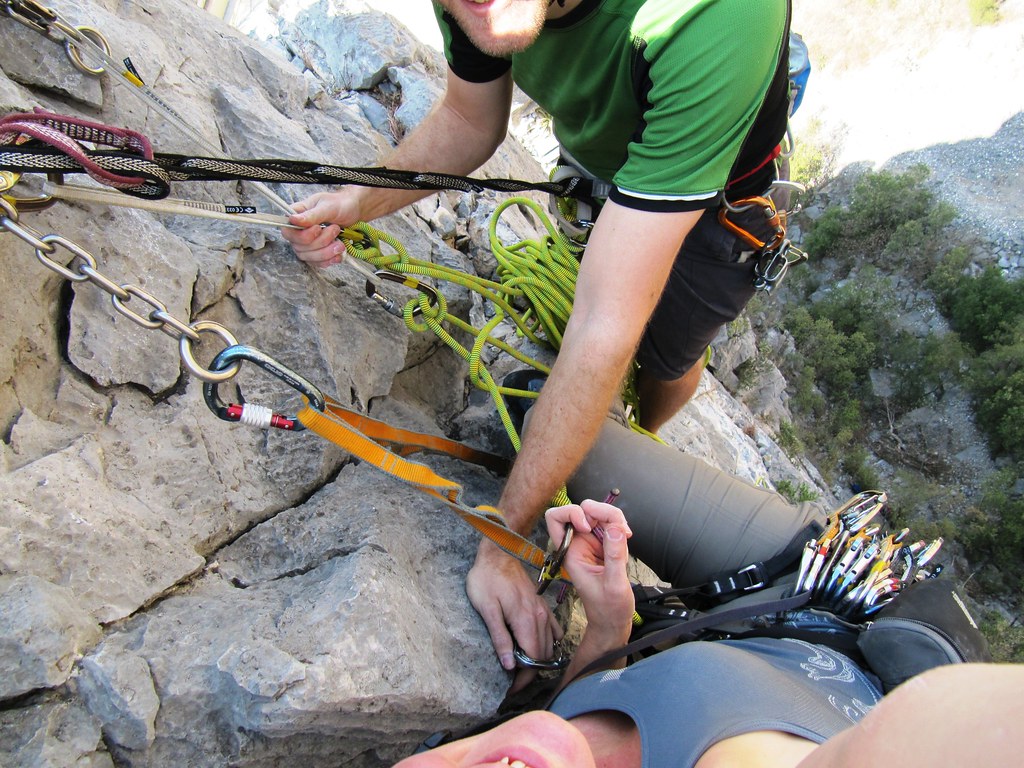
So, you’re ready to take on multi-pitch climbing? That’s awesome! Training for this intense arm-and-leg workout is going to be a rewarding journey. You’ll need to focus on two major areas: physical conditioning and mental preparedness.
Physical Conditioning
Physical conditioning is absolutely crucial for multi-pitch climbing. You’re going to need endurance, strength, and flexibility to handle the physical demands of long, sustained climbs (FlashPumped). Now, I’m not saying you need to become a gym rat, but a good workout routine is essential.
You might be surprised to hear this, but running can be fantastic for climbing endurance. It improves blood flow, makes approaches easier, and even helps with recovery time and energy levels after approaches. In other words, it helps your body adapt to constant strain, keeps the pump at bay, and helps move lactic acid away from the muscles while delivering oxygen to them. This is super important for long routes and harder climbing.
But don’t forget – balance is key! Don’t over-train in one area as it might reduce your overall performance. For example, cyclists and runners tend to have larger legs, so you should also focus on maintaining upper body strength for those sustained compression moves in climbing (Mountain Project).
Mental Preparedness
Now, let’s talk about the mental aspect of multi-pitch climbing. Mental preparedness is just as important as physical conditioning. You’ll need to hone your route finding skills, decision making abilities, and strategies to manage fear and stress.
Take a moment to imagine yourself on the wall: you’re several pitches up, your arms are shaking, and you can’t see the next bolt. This is where your mental strength comes in! Learning to stay calm, focused, and make smart decisions in these moments is crucial.
Remember, training for multi-pitch climbing is as much about building strength in your mind as it is in your muscles. So, don’t skip your mental workouts! Practice visualization techniques, work on problem-solving skills, and most importantly, cultivate a positive, can-do attitude.
And there you have it, the exciting world of multi-pitch climbing training. Embrace the journey, keep pushing your limits, and don’t forget to enjoy the climb! For more tips on climbing, check out our articles on rock climbing etiquette and preventing rock climbing injuries. Happy climbing!
Role of Endurance in Climbing
When you’re hanging on a rock wall, every muscle in your body is engaged, and your heart is racing, trust me, you’ll realize the importance of endurance in climbing. Endurance training is key for climbers looking to sustain performance in their sport for a set period of time. It helps climbers improve their overall stamina and ability to climb for longer periods of time.
Endurance Training Techniques
Different types of endurance training are required based on the specific climbing objective. For example, completing 10 pitches of 5.9 in one route requires a different type of endurance fitness compared to climbing 10 pitches of 5.9 to 5.11 sport cragging, multi-pitch mixed ice and rock, or a weekend bouldering trip.
Training endurance using climbing can be a bit tedious, but it’s incredibly effective. A popular method climbers use is called arcing. This involves traversing a wall or climbing a route for 20 to 30 minutes. This helps us build up our climbing stamina and learn how to recover without coming off the wall.
It’s important to keep the heart rate steady while training endurance. I achieve this by resting on the wall instead of taking breaks off the wall. Resting while on the wall allows one arm to not hold the body weight while the other arm is still holding onto the wall, alternating arms to rest independently.
Benefits of Cardiovascular Training
Cardiovascular training is a great complement to climbing wall training. It enhances the body’s ability to consume more oxygen within the muscles and remove waste, ultimately improving endurance for climbing. We can engage in various cardiovascular activities, such as running or any activity where we can control the output and maintain a steady state for up to 30 minutes.
In addition to improving our climbing performance, cardiovascular training also provides a host of other benefits, including improved heart health, increased metabolism, and better mood. Plus, it’s a great way to get outside and enjoy nature when we’re not on the rock wall.
So, whether you’re a beginner climber just starting out or an experienced climber looking to improve your multi-pitch climbing training, remember that endurance is key. By incorporating endurance training and cardiovascular activities into your routine, you’ll be able to climb harder, longer, and have more fun on the rock. For more climbing tips and advice, be sure to check out our rock climbing etiquette and pro rock climber interview. Happy climbing!
Rope and Gear Management
In the world of multi-pitch climbing training, knowing how to manage your rope and gear effectively is an absolute game-changer. I can’t emphasize enough how important these aspects are!
Efficient Rope Handling
I’ve learned the hard way that efficient rope management is crucial in multi-pitch climbing. It can make the difference between a smooth climb and a frustrating battle with tangles and snags. Techniques like flaking the rope, using a rope bag, and using intermediate anchors have been lifesavers for me in managing the rope effectively.
Remember, efficient rope handling not only saves time and energy but also reduces rope drag, making your climb smoother and more enjoyable. So, take the time to master this skill. Your future self will thank you!
Importance of Quality Gear
When I first started my climbing journey, I quickly realized that good quality gear is worth its weight in gold. This is even more important in multi-pitch climbing, where the physical demands and technical skills required are significantly higher (Petzl.com).
Investing in top-notch gear not only ensures your safety but also enhances your climbing performance. And let’s not forget, quality gear is more durable and will stand up to the rigors of multi-pitch climbing for longer.
Don’t skimp on this. If things feel unsafe or too complicated, it’s important to seek professional help. A good instructor or guide can provide guidance on the right gear to invest in and how to use it effectively. Trust me, learning from a teacher is different from simply performing the skill oneself.
Rope and gear management might seem like small components of multi-pitch climbing training, but they’re integral to your success on the wall. So, practice, invest in good gear, and keep learning. The view from the top is worth it!
Communication in Multi-Pitch Climbing
We’re reaching the crescendo of our multi-pitch climbing training, and it’s time to talk about one of the most critical aspects of climbing: communication. Yes, you heard it right, communication! Now, let’s explore why clear communication is so crucial and how to strategize it effectively.
Importance of Clear Communication
I can’t stress enough how communication between climbers is the lifeline during multi-pitch climbing. Imagine this, you’re dangling hundreds of feet off the ground, and the only person who’s got your back is your climbing partner. In such a situation, clear and concise communication ensures that both climbers are aware of each other’s actions and can anticipate any changes in the climbing plan. It’s like a symphony, every move orchestrated to perfection through words and signals (Petzl.com).
But don’t just take my word for it, check out this pro rock climber interview where they emphasize the importance of communication in multi-pitch climbing. So, if you’re planning your first ascent, make sure your communication game is as strong as your climbing game!
Effective Communication Strategies
Now you know why communication is so important, but how do you go about it? Here are a few strategies I’ve picked up during my climbing escapades:
- Pre-Climb Briefing: Before you start the climb, discuss the climbing plan and route with your partner. Understanding the route guide/description is crucial. It’s important to be familiar with terms like faces, corners, cubbyholes, arêtes, and dihedrals. Also, knowing how to descend once the climb is finished is essential.
- Establish Signals: Clear communication isn’t always about talking. Often, the wind, distance, or noise can make verbal communication difficult. Having a set of hand signals or rope tugs can be a lifesaver!
- Check-In Regularly: Regular check-ins with your partner can help ensure both are on the same page. A simple “Are you good?” or “Ready for the next pitch?” can make a world of difference.
- Be Assertive: If you’re uncertain or uncomfortable, speak up! Safety should always be the number one priority.
Remember, climbing isn’t just a physical challenge; it’s a test of your ability to work in a team, to trust, and most importantly, to communicate. Don’t forget to check out our other articles on preventing rock climbing injuries and rock climbing etiquette to make your climbing experience safe and enjoyable. Now, go out there and conquer those pitches!
Climbing Techniques for Multi-Pitch
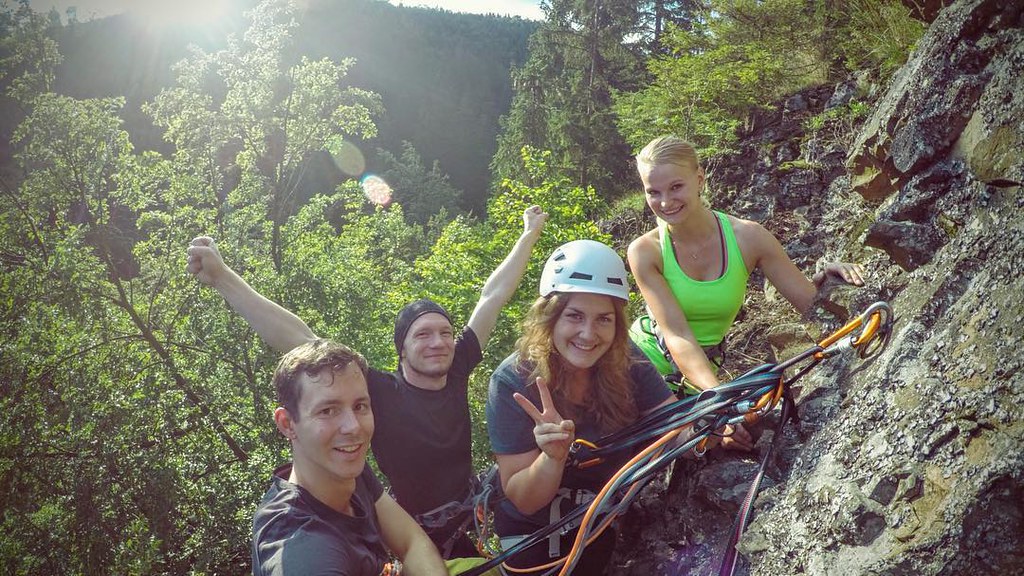
One of the most exhilarating parts of my multi-pitch climbing training is developing and refining my climbing techniques. It’s not just about getting to the top; it’s about how you get there. Let’s delve into some of the techniques that can make your multi-pitch climbing experience more efficient and enjoyable.
Developing Efficient Climbing Techniques
As I learned from Petzl.com, developing efficient climbing techniques, such as using proper body position, effective footwork, and conserving energy can greatly enhance my performance and safety in multi-pitch climbing.
Here’s what I focused on:
- Body Position: I learned to keep my body close to the wall and use my legs more than my arms to conserve energy.
- Footwork: I paid attention to where I placed my feet. Small footholds can be just as effective as larger ones if used correctly.
- Energy Conservation: I tried to rest whenever possible, even if it was just shaking out one arm while the other held on.
Remember, efficiency is key! The less energy you use to climb, the more you’ll have for the descent and the next pitch.
Conserving Energy on the Wall
When I’m hanging on a rock face hundreds of feet above the ground, I know that every bit of energy counts. I learned a few tricks to conserve energy and climb smarter, not harder:
- Rest When Possible: This might sound obvious, but it’s easy to forget when you’re on the wall. Whenever I find a good resting spot, I take it. Even a few seconds of shaking out my arms can make a big difference.
- Use Your Legs: Our legs are stronger and have more stamina than our arms. I learned to push with my legs instead of pulling with my arms whenever possible.
- Breathe: It’s easy to hold your breath when you’re making a difficult move or feeling nervous. But steady, regular breathing helps keep your muscles oxygenated and your mind clear.
These skills don’t come overnight, but with practice, they become second nature. And the payoff is huge: less fatigue, better performance, and more fun on the wall! For more tips and tricks, check out our pro rock climber interview.
As I continue my journey in multi-pitch climbing training, I’m constantly learning and improving. Whether it’s mastering a new technique or figuring out how to conserve energy on the wall, every day brings a new challenge and a new opportunity to grow. And that’s what makes climbing so exciting!

